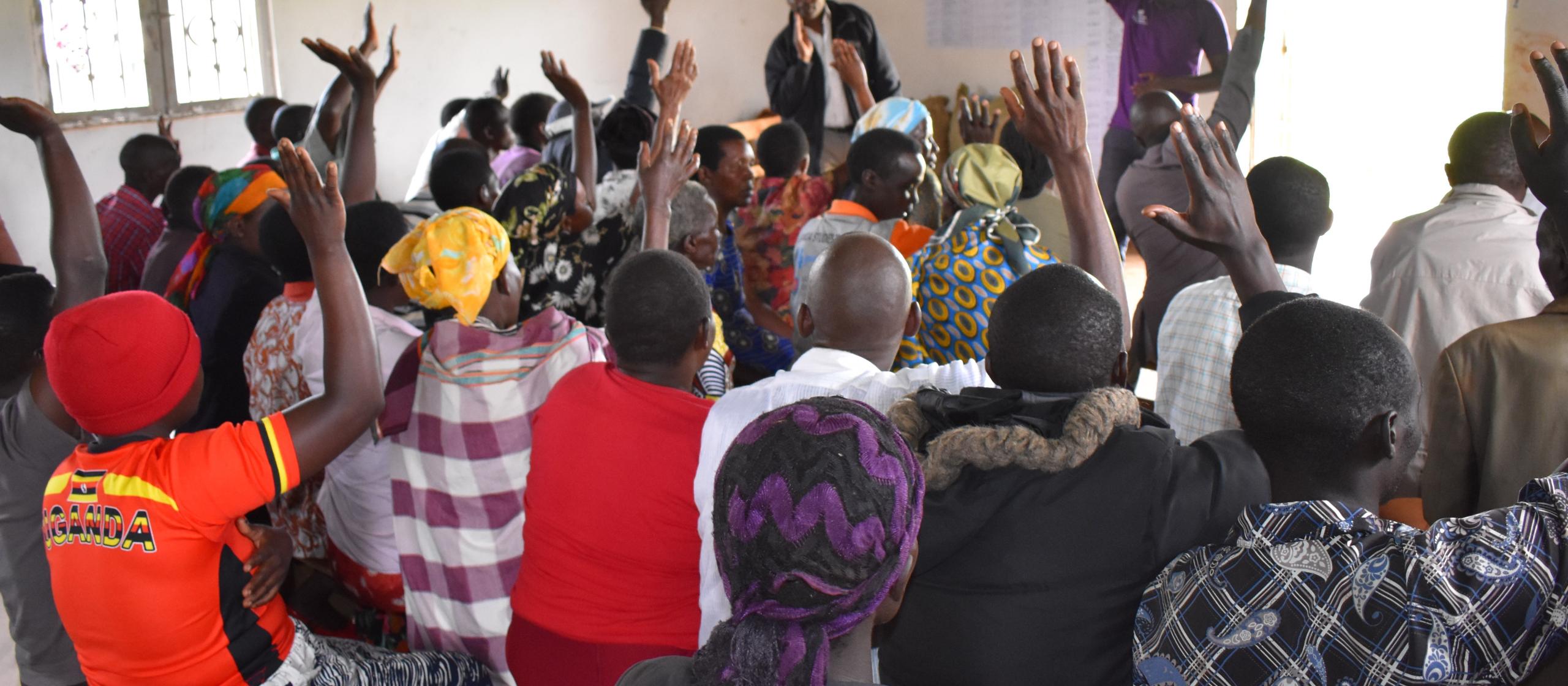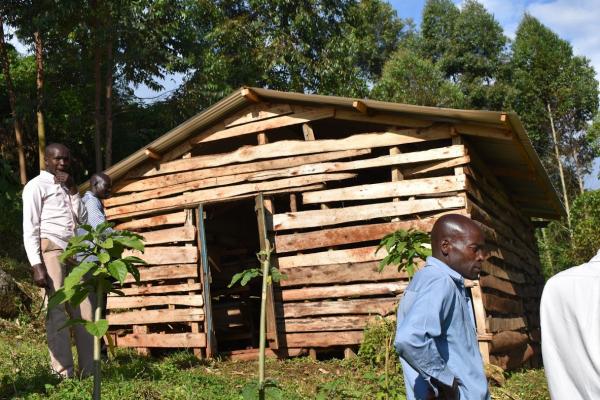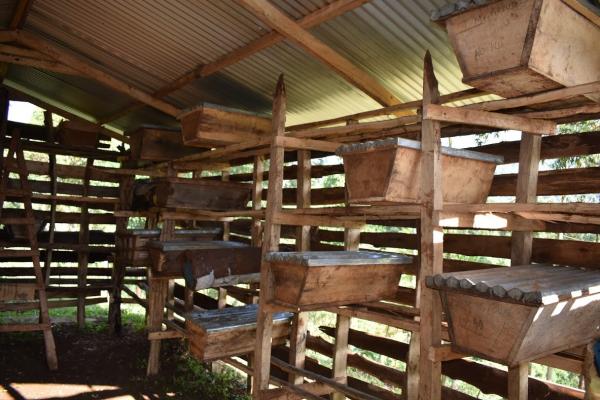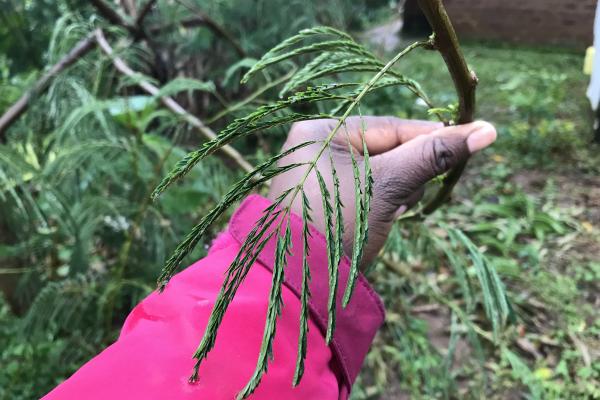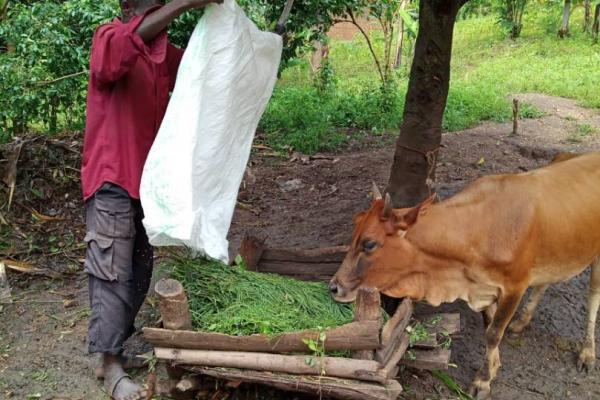- HomeHome
-
About ACIAR
- Our work
- Our people
-
Corporate information
- ACIAR Audit Committee
- Commission for International Agricultural Research
- Policy Advisory Council
- Agency reviews
- Executive remuneration disclosure
- Freedom of information (FOI)
- Gifts and benefits register
- Information publication scheme
- List of new agency files
- Contracts
- Legal services expenditure
- Privacy impact assessment register
- Commonwealth Child Safe Framework
- Benefits to Australia
- Careers
- 40 years of ACIAR
-
What we do
- Programs
- Cross-cutting areas
- Resources
- Where we work
-
Funding
- Research projects
- Fellowships
-
Scholarships
- John Allwright FellowshipScholarships to study in Australia for ACIAR partner country scientists to have Australian postgraduate qualifications
- ACIAR Pacific Agriculture Scholarships and Support and Climate Resilience Program
- Alumni Research Support Facility
- Publications
- News and Outreach
Date released
08 April 2020
By coming together in larger groups called ‘innovation platforms’, farmers in eastern Uganda are using their collective knowledge and scale to develop their milk and honey products and access new markets.
This effort is seeing the farmers—in the Mount Elgon region—increase their farm-based income.
Two innovation platforms, the SIKAKO Women Beekeepers Innovation Platform and the Namabya Dairy Innovation Platform, have proven highly successful with the support of a project funded by ACIAR.
Honey a sweet success
Each farmer in Kapchorwa district typically has two beehives on their landholding which supply their household’s needs. The low productivity of the hives, lack of post-harvest handling equipment and reliable buyers, and limited access to extension and market information means the honey is rarely traded or sold.
Wild bees are abundant in the area so the farmers—mostly women—do not have issues related to beehive colonisation. In other words, there are always plenty of bees naturally present in hives and on each farm. That very abundance of bees inspired local farmer Ms Sophie Chekwoti.
‘I saw a swarm of bees pass by my house and perch on a tree in my farm,’ Ms Chekwoti says. She says she wanted to keep the bees but didn’t want to have them close to her homestead as she needed to avoid unwanted stings from bees out foraging and looking for water.
Ms Chekwoti is a member of the SIKAKO Women Beekeepers Innovation Platform, which was formed in 2016 when three entities combined: the Siron, Kaptokwoi and Kokwomurya women’s beekeeping groups.
It was the members of the SIKAKO Women Beekeepers Innovation Platform who came up with the idea of hosting previously wild bees in bee houses—manmade structures to house beehives— positioned away from human dwellings and closer to the nearby Mount Elgon National Park.
Supporting the innovation platforms is an ACIAR project led by Dr Clement Okia, Country Representative, World Agroforestry (ICRAF) Uganda. ‘We found that communities living adjacent to Mount Elgon National Park had traditionally been placing beehives within the park but they experienced several challenges, including destruction of hives by wild animals, theft of honey and use of mainly traditional beehives. The project team sought to improve honey yields by building the capacity of innovation platforms to keep bees on their farms.’
‘There are old sayings that when the flowers of a local tree, commonly known as tobongwet, appeared, it indicated the time of harvesting honey,’ says Fatumah Chelimo, one of the SIKAKO Women Beekeepers Innovation Platform members.
‘This would mislead us to harvest very little honey and prematurely.’
Crude harvesting methods were also used whereby small sticks were tied in a bundle called a namoryeek. One end of the bundle was lit and inserted into the beehive to burn out the bees. The harvested honey was of poor quality and low value.
The process destroyed bees at the pupae stage of development as they were removed with the honeycombs, breaking the bees’ lifecycle. To process the honey it was boiled, which further reduced its quality and prospects for sale.
|
|
|
To support the women’s beekeeping endeavours the World Agroforestry Centre (ICRAF), Makerere University and Kapchorwa District Landcare Chapter (KADLACC) have provided training to help the group identify crops to plant as forage for their bees. As a result, the farmers are now planting calliandra and other plants that contribute to the area’s biodiversity.
ICRAF and Uganda’s National Forestry Resources Research Institute (NaFoRRI) provided Calliandra calothyrsus seedlings to the SIKAKO Women Beekeepers Innovation Platform members while Makerere University and the KADLACC trained the farmers on how to plant them as bee forage and provided advice on apiary siting, bee feeding (bee forage and supplementation), hive inspections, bee stings and their management, pests and parasites, and honey harvesting.
Each bee house has the capacity to host more than 150 hives managed by various members of the innovation platform. The members are harvesting honey twice a year and each hive is able to produce 20 litres annually.
The impact of the project is already showing with SIKAKO Women Beekeepers Innovation Platform members saving more than nine million Ugandan shillings (A$3,500) in 2018.
The impact of the project is already showing. SIKAKO Women Beekeepers Innovation Platform members now meet every week and have established a credit and savings scheme which has resulted in the group saving more than nine million Ugandan shillings (UGX) (A$3,500) in 2018. This money was used to buy hives and some was also distributed among the group members according to their share while the rest was kept aside for lending to other members.
In addition, through the innovation platform, the women have identified better markets for their honey. Through their regular meet-ups they discovered a good place to sell honey in Kampala at 25,000 UGX (A$10) a kilogram. They usually bulk their honey and send it to the shop through one of the farmers’ children, who is a university student. They also sell their honey to local traders in Kapchorwa at 20,000 UGX (A$8) a kilogram.
Members can purchase local beehives at a low cost from within the innovation platform for about 15,000 UGX (A$6) each compared to beehives imported from Kenya which could cost up to 95,000 UGX (A$25) per unit.
Dairy—a good option
Like honey, the value chain for dairy is underdeveloped. Farmers in Manafwa—on the southern end of Mount Elgon National Park—typically keep one or two cows that are actually not very productive.
‘We’ve found that over 90% of rural households in Manafwa own one or two dairy cows,’ says Dr Okia.
‘The cows are generally improved breeds with a potential for high milk yields. However, poor feeding has been leading to low milk yields.’
To help, the project team, which includes partners from ICRAF, Makerere University, NaFORRI, KADLACC and the University of Adelaide, sought ways to improve milk yield and the dairy value chain in general.
‘Two dairy cows have the potential to move a rural household out of poverty if properly managed,’ says Dr Okia.
‘For improved dairy cows, about 60% of milk yield is attributable to improved feeding—that is why the project team focused on this aspect. The other aspects are housing and animal health.’
Working in Manafwa, the project team conducted a baseline study that uncovered poor feeding practices as one of the causes of the low milk yields. This initiated the formation of the Namabya Dairy Innovation Platform in 2017.
Makerere University and NaFORRI delivered dairy practices training to farmers and introduced the calliandra shrub as a supplement to the cows’ feed through a citizen scientist approach to foster adoption. This entailed identifying two farmers in each village who had lactating dairy cows. Over a period of 40 days, one farmer was given calliandra as a feed supplement for their cows and the other fed their cows using normal practices. These farmer citizen scientists were also given diaries in which they recorded every day what and how much they fed the cows, and the volume of milk that the cows produced at each milking.
In the middle and at the end of the trial period, the project team and the district veterinary staff met with the local community. The farmer citizen scientists were at the forefront of the meetings, sharing the results of the trials and showing the changes in daily milk production. The farmer citizen scientists and other community members then discussed the results with the project team.
The results consistently showed that the cows that were fed on calliandra as supplementary feed increased their milk yield from two to up to five litres per day. As a result, more farmers planted calliandra on their farms.
‘We were impressed by the key role played by citizen scientists as they were able to demonstrate to their peers improvements in milk yields as a result of improved animal feeding,’ says Dr Okia. ‘Some of the citizen scientists pointed out that a dairy cow can be a household’s bank account if it’s managed and fed well.’
|
|
|
The team also conducted general dairy animal husbandry training and established village calliandra nurseries, distribution centres and sales mechanisms. Calliandra seedlings were then sold to farmers at the rate of 100 UGX (a fraction of A$1) for two seedlings.
In addition to improving milk yields, calliandra also improves soil fertility—a double win for the farmers. The fodder from the plant contains about 22% protein, which is essential for the animals’ protein needs.
Through the Namabya Dairy Innovation Platform, farmers who hadn’t personally attended the training heard about the results, encouraging them to adopt calliandra in their feeding to increase milk yields. Farmers also decided to plant more forage species and properly care for and manage their animals. The district and sub-county agricultural officers are part of the innovation platform and able to dispense information to the farmers.
Dr Clements adds, ‘By involving the local government structures in field experiments and information dissemination, the project team built local capacity for scaling the impact of the project.’
Way forward
The project wrapped up at the end of 2019 but the members of both innovation platforms are looking forward to not only continuing the innovation platforms but also seeing how they can tap into markets beyond Kapchorwa and Manafwa.
Members of SIKAKO Women Beekeepers Innovation Platform are now seeking the means to package and market their honey to sell it internationally. Honey can be sold locally and production is liked by farmers because it is less labour-intensive than other enterprises.
Additionally, farmers are seeking to invest in high quality harvesting equipment as a group. Not to be left behind, the Namabya Dairy Innovation Platform is seeking to obtain better breeds of cattle to further increase their milk yields to help increase local supply and sell into bigger towns such as nearby Mbale. Additionally, they are working to establish more calliandra nurseries to produce seedlings for planting and sale to other farmers.
